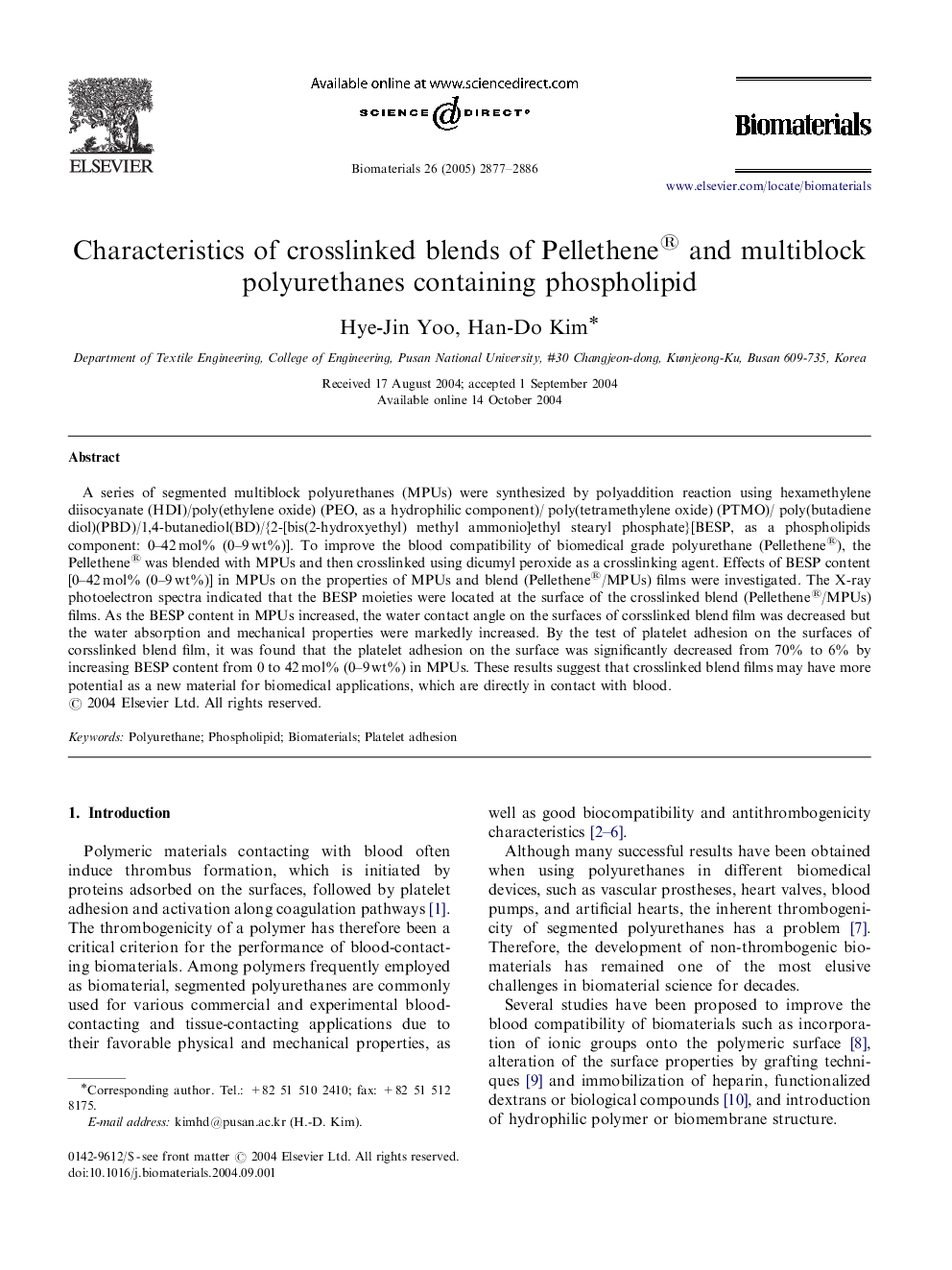| Article ID | Journal | Published Year | Pages | File Type |
|---|---|---|---|---|
| 12237 | Biomaterials | 2005 | 10 Pages |
A series of segmented multiblock polyurethanes (MPUs) were synthesized by polyaddition reaction using hexamethylene diisocyanate (HDI)/poly(ethylene oxide) (PEO, as a hydrophilic component)/ poly(tetramethylene oxide) (PTMO)/ poly(butadiene diol)(PBD)/1,4-butanediol(BD)/{2-[bis(2-hydroxyethyl) methyl ammonio]ethyl stearyl phosphate}[BESP, as a phospholipids component: 0–42 mol% (0–9 wt%)]. To improve the blood compatibility of biomedical grade polyurethane (Pellethene®), the Pellethene® was blended with MPUs and then crosslinked using dicumyl peroxide as a crosslinking agent. Effects of BESP content [0–42 mol% (0–9 wt%)] in MPUs on the properties of MPUs and blend (Pellethene®/MPUs) films were investigated. The X-ray photoelectron spectra indicated that the BESP moieties were located at the surface of the crosslinked blend (Pellethene®/MPUs) films. As the BESP content in MPUs increased, the water contact angle on the surfaces of corsslinked blend film was decreased but the water absorption and mechanical properties were markedly increased. By the test of platelet adhesion on the surfaces of corsslinked blend film, it was found that the platelet adhesion on the surface was significantly decreased from 70% to 6% by increasing BESP content from 0 to 42 mol% (0–9 wt%) in MPUs. These results suggest that crosslinked blend films may have more potential as a new material for biomedical applications, which are directly in contact with blood.
